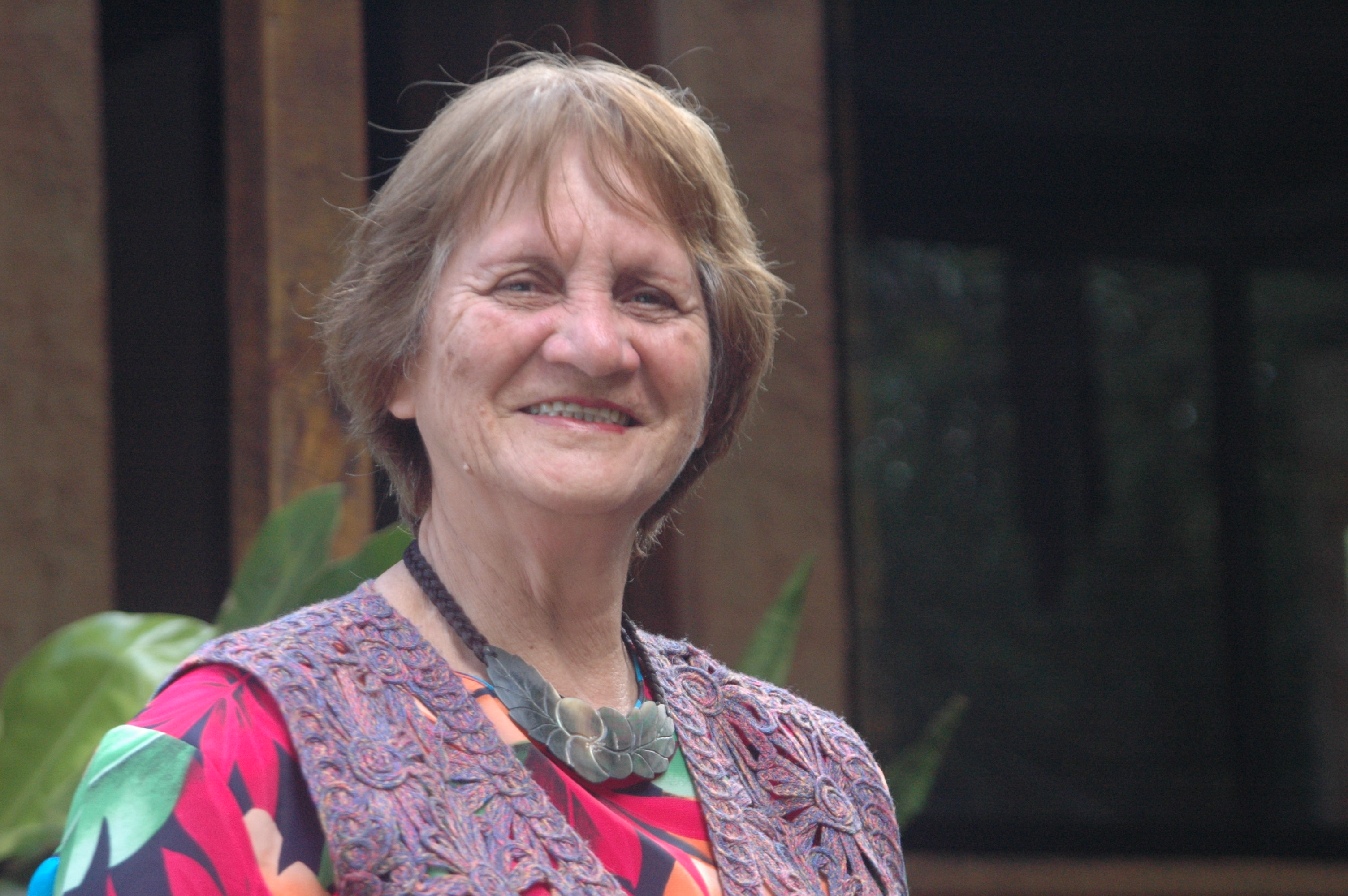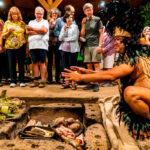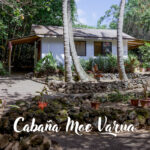
Six years later, on March 1, 1966, with the publication of “The Easter Island Law” as created by the government of Eduardo Frei-Montalva, the history of Easter Island changed. The island territory, under Maritime Authority since 1917 with the Islanders submitting to naval laws and regulations, became an integral part of the Region of Valparaiso and the Easter Islanders become Chilean citizens with full constitutional rights, 78 years after the Island was annexed to Chile in 1888. Soon local government was formed and community public services were installed. As contacts between the directors of the services and the Island community, some Islanders who had been living on the continent and who spoke Spanish were invited to return with good salaries. Patricia Lillo continues: “My brother-in-law was one of them. In August, he took a position in the future Civil Registry Office. My sister arrived with their fourth child, just born, and with our sister Mercedes, but had problems with her health. Since there was no hospital nor regular air service at that time, on the next ship my mother arrived with Beto and two younger brothers to take care of the older children while Elvira sailed back to the continent. When she returned, she brought me and my sister Carmen on the first commercial flight by LAN. I remember that we flew for 11 hours. When we came down the stairs from the plane, we were surrounded by people. At that moment, Elisa Paté-Pont shouted at me from her horse: ‘get up’. She grabbed me by an arm and pulled me up, slapped her horse and off we went galloping along the coast by Hanga Vare Vare. There were no houses … we came to a Pae pae(a shack) on a green hillside where my sister’s children were. Then we went galloping uphill to my mother’s house on Ara Roa Rakei. The road was lined with coffee trees, which don’t exist anymore.
“When we finally arrived, I found a lot of people. Word had gone out that the sisters of Marcelo’s wife were arriving. Since, in those days, there were fewer women, all the ‘unattached bachelors’ showed up with guitars and serenades. Among the group was my future husband, Casimiro Hey-Riroroko, who turned out to be the most insistent. Everyone then thought that we were together, but I was only 16 years old and wasn’t interested. I was able to get a job at the U.S. Air Force base that was a satellite tracking station, authorized by the President Eduardo Frei-Montalva though an agreement with the Chilean Air Force. Casimiro, always watching me, worked in the gringos’ (Americans’) mechanics shop while I worked in the kitchen just across the road. So a year went by. I resented the pressure and all I wanted to do was return to Santiago. “When we went by horseback to take the airplane, Casimiro was crying and hanging on to the horse. Two months later, he was at the door of our house in Santiago. My little brothers shouted at me: ‘Cati’s here. Cati’s here.’ He hugged me and kissed me which upset my father, but my mother told him that he was a good man and used to bring us food on the Island. When Casimiro went back to his Island, he thought that we were engaged.”
“I wanted to stay on the continent and study to become a teacher, but my father was so controlling that I even thought about entering a convent and asked my mother to let me return to the Island. I went back to working two or three times a week with the Americans. This time I was the cleaning lady at the camp that they had on the side of the volcano. It was in a dip in the hill, well camouflaged, and couldn’t be seen from the road. Several rooms were filled with computers, but they were all under lock. They told me: ‘Whatever you see here, you didn’t see and whatever you hear, you didn’t hear’. Casimiro wanted to continue going steady, but I told him that unless he fixed his teeth, he was missing his two front teeth. It didn’t occur to me that his (cousin), Catalina Hey, was married to a dentist. So it was that, very shortly, we got engaged and married. My in-laws, Enrique Hey and Amelia Riroroko, received me well and were very generous with us. My father-in-law’s brother, Juan, began to call me ‘Paratani’. My mother-in-law was very sweet and taught me so many things, like how to make necklaces of shells and how to find those places in the countryside where there is fresh water.”
“Casimiro was a fisherman and would go to the bay at Hotu Iti or to La Perousse and sometimes would be gone for months. I decided to join him so that our two little kids could be with him. We lived in a cave that I had to set up as best I could. I made a small stone wall to put things on and lined the rocky walls with sheets of cloth to protect us from the rats. There was a type of grass that would get warm with the sun, so that it could be cut at mid-day and strewn in the cave to sleep on at night. I learned how to collect wood, how to make a fire and keep it burning all day long. We had to be very frugal with the matches. The supply ship came once a year and the airplane only once a week with the perishables food. There really was very little food for the 1,100 residents. Within 3 to 4 months everything would spoil; the milk would go rancid, the flour had to be sifted for bugs and the sugar would turn yellow with a taste of petroleum. Some families had good land and planted sweet potatoes, manioc and taro to accompany their fish or lamb, but others didn’t.”
“In truth, fishing was not a paying job. Fish was not sold but was shared with family. It didn’t offer a steady income and I wanted my children to be able to study in Santiago. So I took the bull by the horns and went to sell fish at the Hanga Roa cove. Many times, I went out with my husband to fish, to look for Jajave(bait) and stones to use as weights, as well as setting nets. I did everything. In those days there was only one small generator which functioned from four in the afternoon until ten at night. It was so weak that if I washed clothes, my neighbor didn’t have enough energy available to make her machine work. We had to take turns.
“I was married for 46 years. Since I never even dated anyone else, it was what I had to live with. I learned to be a mother, to be braver, to face any adversity in life and how to stand up to my Rapanui family. I felt that they loved me and, also, didn’t love me. Casimiro was a typical Rapanui man, hard and sweet at the same time. They think that they are so tough, but they are very childlike and very ‘machista’. Every time that Casimiro would get angry and upset, I’d bring him back into line. Sometimes he managed to control himself, but other times not and he’d raise his hand to me. I even took him to Court. The problem is that they learned to live like that. They were mistreated children who had to work hard from the time they were very small. I used to see children only 4 years old on tip-toes, as though hanging from the sink, forced to wash the plates.
“I’m a widow now for almost three years and I’ve become a small businesswoman with a B&B for tourists called Vaihere (www.hostalvaihere.com). My three oldest children have married Rapanui and I have 10 grandchildren; the newest one is from my youngest daughter. Today I am content with my life on the Island. As a founder and active member of the women’s group Makenu Reo Rapa Nuisince 2009, I have hopes that our dreams of a Special Statute for Easter Island will be fulfilled, giving us laws that apply a control on migration and allow the Rapanui to gradually assume administration.”










